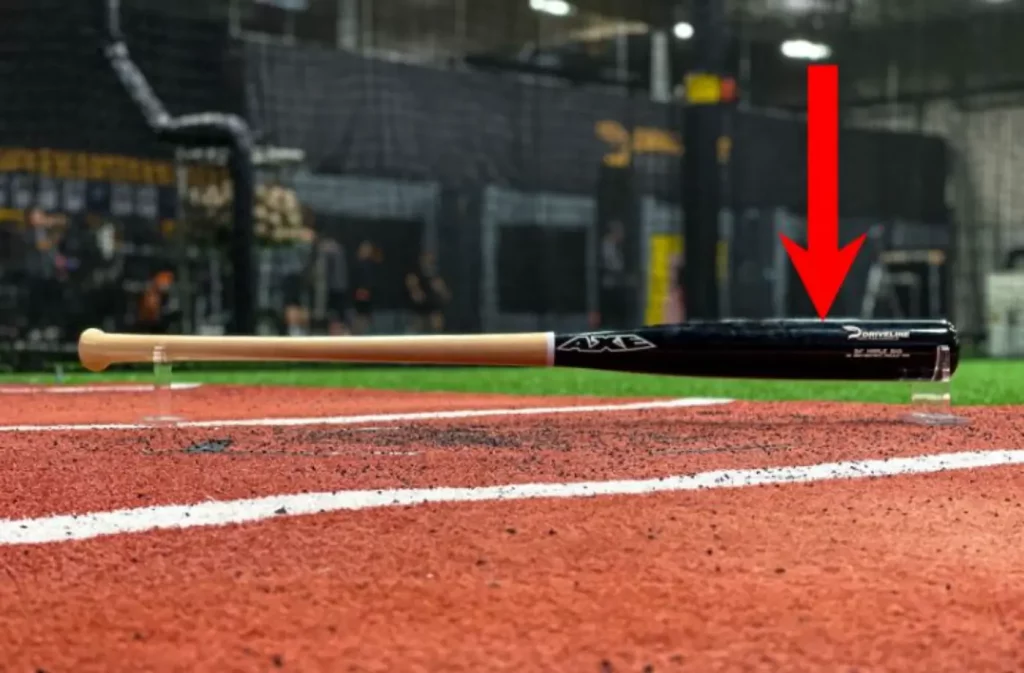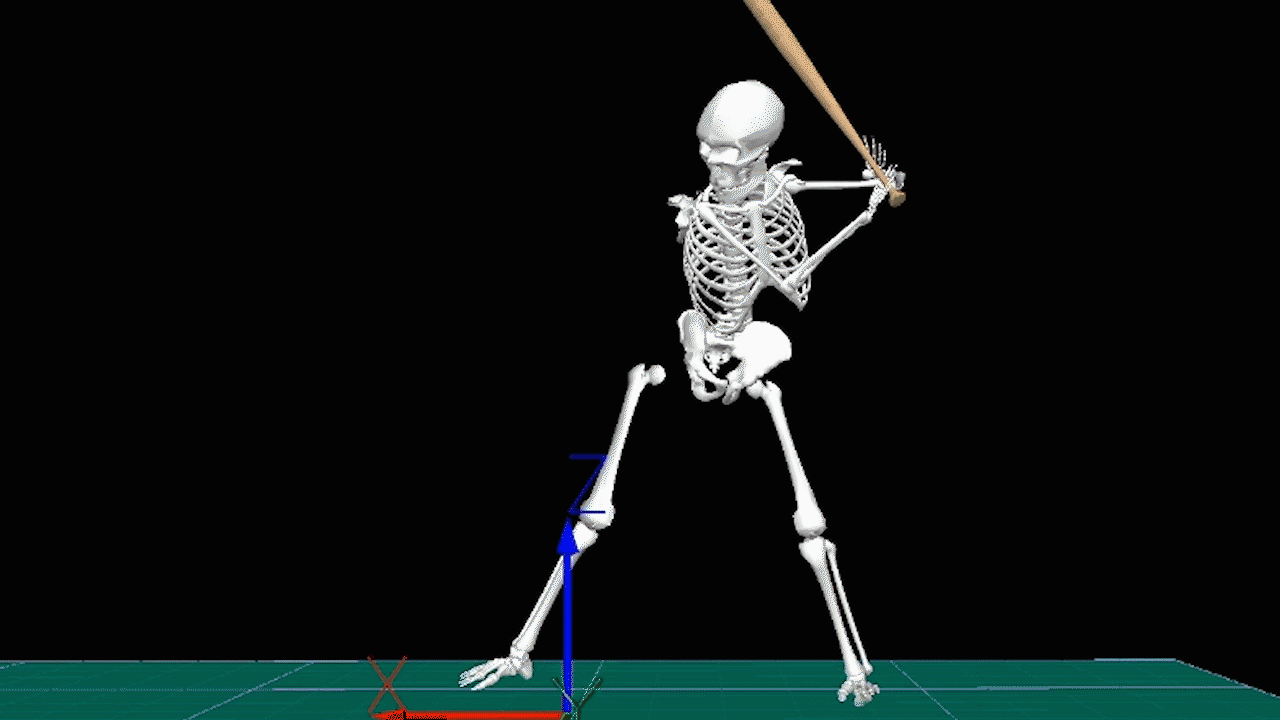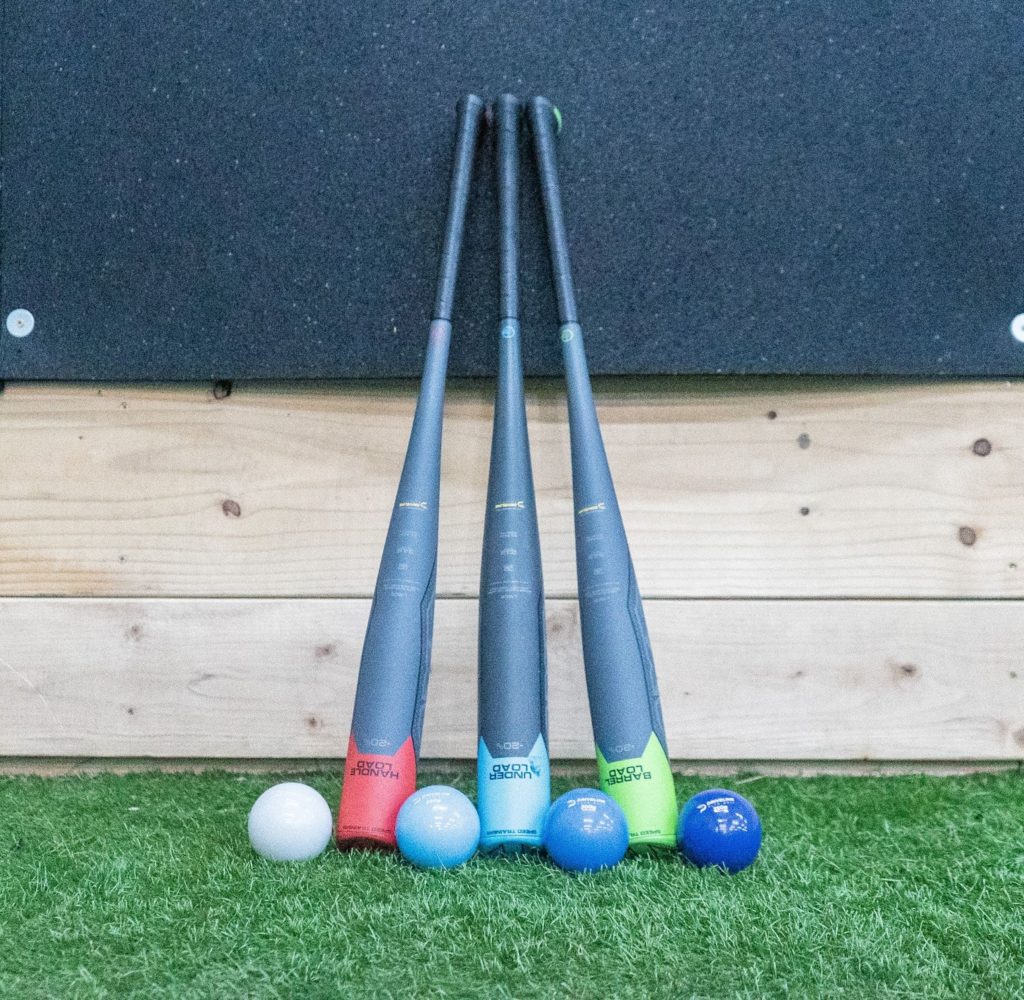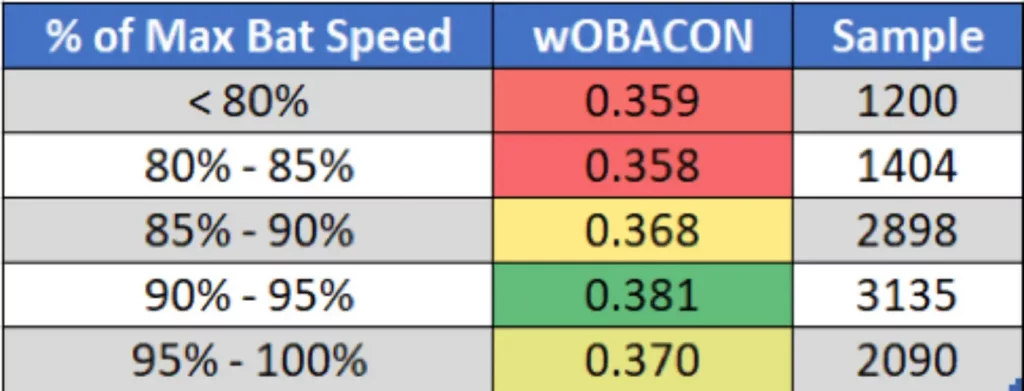How to Increase Your Bat Speed

Written by JP Fasone, John Sotoropolus, Max Dutto, Alex Caravan, Dan Aucoin and edited by Michael O’Connell
Today, all hitters need to understand why bat speed is important, how to increase bat speed, and drills to improve bat speed.
What is bat speed?
When we measure bat speed, we measure how fast the sweet spot moves when contact occurs.
Using bat sensors means that we’re measuring bat speed at contact. At Driveline, we use Blast Motion sensors and our motion capture lab to measure bat speed.

Importance of Swinging the Bat Fast
Swinging the bat fast is vital because it determines how hard you’ll be able to hit the baseball (in other words, your exit velocity). Exit velocity is essential because harder hit balls have a higher probability of success. The reasons higher exit velocities are more productive are:
- If a ball is hit harder, then there is less time for the defense to react and make a play
- Higher exit velocities lead to farther hit fly balls. The math works like this for fly balls:
- One mph of bat speed = 1.2 mph of exit velocity = 7 ft of distance
So how can we use this information in drills to improve bat speed?
If we break it down into its smallest pieces, these are the aspects that directly create exit velocity in a batted ball:
- bat speed
- mass of the bat
- pitch speed (to a lesser extent)
- hitting the ball on the sweet spot, what we measure as Smash Factor.
Since this is the case, hitters can train to improve two factors: how fast they can swing the bat and hitting the ball flush on the sweet spot.
How Bat Speed Relates to Hitting the Ball Harder
Bat speed and exit velocity share a linear relationship! If you swing the bat faster, you will hit the ball harder. It bears repeating if you swing the bat faster, you will hit the ball harder. The calculation is somewhat intuitive and simple. For every one mph of bat speed added, you will be able to hit the ball +1.2 mph harder. So:
- +1 mph of bat speed = +1.2 mph of exit velocity
- +2 mph bat speed = +2.4 mph of exit velocity
- +3 mph bat speed = +3.6 mph exit velocity
This linear relationship is one of the main reasons we place such a heavy emphasis on swinging the bat fast. If you were looking to learn more about the relationship between bat speed and exit velocity, check out this Alan Nathan lecture on the ball-bat collision.
Suppose two hitters hit the ball flush with the same pitched ball speed, using the same ball and bat at the same field at the same time. In that case, the hitter who struck the ball with the barrel of the bat traveling the fastest at impact will have produced a higher exit velocity.
Knowing this, let’s dive into the best tools coaches and players can use, which are research-backed, to increase bat speed.

Foundations of Hitting
Thirty modules teaching you everything we know about hitting and hitting mechanics.
Best Tools to use in Drills to Improve Bat Speed
Overload/underload training is a staple at Driveline. Because of the added weight, overload bats develop functional strength and train the body to move more efficiently. Underload bats allow athletes to move at speeds faster than their normal limits.
Moving faster helps train the athlete to move faster.

Swinging heavy and light bats are the most tried and true method for helping hitters swing faster. To get the most out of weighted implement training, we want to understand why it works to have the right thoughts and intent during practice sessions.
It helps to think of overload as weightlifting for your swing—we are improving your specific strength and using the specificity of actually hitting a ball with a bat to get the most transfer out of our training. Additionally, overload can provide us with the opportunity to make positive movement changes.
Let’s think of how different our movements are when bending over to pick up a ball in a cage vs. picking up a 400lb barbell from the ground. We will certainly be moving more efficiently when there is more weight involved in the movement. Overload bats act similarly, on a smaller scale.
When the intent is to move the bat fast, our brain tells our body to be more efficient by recruiting larger, stronger muscle groups to swing the bat. This can also improve sequencing, as the brain tells our body to start transferring energy more efficiently because of the reaction to the heavy bat and the directive to move that bat fast.
With underload, we take advantage of overspeed principles, similar to running downhill to improve sprinting speed. We are training our central nervous system to recruit more fast-twitch muscle fibers to improve the pure velocity portion of the movement.
We find weighted bats to be the most effective tools in training to swing fast. There are a number of drills that we use them in but underlying the specific drills there are key factors
Biggest Factors in Choosing Effective Drills to Improve Bat Speed
There are three critical components to any effective bat speed program:
- Intent
- Feedback
- Goal tracking
INTENT
The first concept we need to discuss is a hitters intent.
The right intent is paramount when training for bat speed and, above all else, our goal when training is to move the bat faster than we ever have before. This is why we encourage our hitters to move the bat as fast as possible.
While training to swing fast, we are less concerned with contact quality and want to focus as much as possible on moving fast. Without the proper intentional focus, nothing else matters. Intent is something that can carry over to many drills to improve bat speed.
At Driveline we break down a hitters training into three main areas. Bat speed, Bat-to-ball skills (Smash Factor) and Swing Decisions. This means that there should be pieces of a hitters program where they are only concerned with swinging fast. A bat speed focus typically occurs early in a hitters offseason and the skills of bat-to-ball and swing decisions will become more important as the hitter gets closer to the season.
We’ll also mention that the environment matters. How fast a player swings off a tee or in flips is not the same as bat speed in a game. We see it often and it makes sense that in more controlled environments, like the tee or flips, bat speeds will trend higher. Coaches simply need to keep an eye on players’ swings to make sure that they aren’t becoming too unlike their game swing.
To unlock a hitter’s intent, we often program bat speed training to be done off the tee and into the net. When using a bat sensor limiting the feedback available to the hitter helps them focus just on bat speed.
Using a tee and net is normally a part of bat speed training for hitters at Driveline, but for a few reasons, we will increase the specificity of training and swing weighted bats at higher intent in batting practice or off a machine, especially as the offseason goes on. We’ll program this type of bat speed training for more experienced hitters who understand the role of intent and limit their emotional and physical reactions to poorly hit balls.
Although it is important to be extremely precise with programming, especially for highly skilled professional players, taking the necessary measures to train solely for speed initially is almost certainly the most critical aspect in ensuring improvement.
Intent directs the movements, and feedback will guide the intent.
FEEDBACK
Feedback loops are vital to any training environment. The type and timing of the feedback will dictate how quickly the athlete makes adjustments.
At Driveline, we use Blast sensors to provide instant, objective feedback to our hitters. This tight and objective feedback loop allows training adaptations to occur more quickly.
Feedback is also vitally important but what an athlete feels is happening may not be exactly what is happening. It is not uncommon for MLB hitters to feel like they are swinging slower in order to hit the ball harder. ALTIS is known for saying that acceleration may feel slow to elite athletes, but through our in-gym and MLB data, it is clear that the bat itself is not moving slower despite the feel of the athlete.
This is a good example of how feel isn’t real and a coach needs to focus on how to communicate those differences to his hitters. This is why we find it so important to use launch monitors and bat sensors when available because they can assist with pairing the hitters’ feel to what the bat and ball are actually doing—similar to how a pitcher would want to use a ball-tracking device and camera to pair feel and real when learning a new pitch.
If a hitter feels like he is swinging the slow but exit velocity and bat speed are increasing, then he knows what he must feel in order to accomplish both. This is what separating feel from real looks like in practice.
One of our favorite tools that combines these factors is hitting weighted balls, check out how we use our hitting PlyoCare® balls on a daily basis.
When hitters receive positive or negative feedback based on their quality of contact, it’s likely pure speed training can be compromised, as the hitter’s effort level is capped by the need to put the barrel on the ball. The same goes for making the training environment too difficult; the hitter’s focus will shift from speed to guiding the barrel to receive a form of positive feedback. Bat speed feedback is something that can be given in multiple drills to improve bat speed.
Feedback can be in the form of a launch monitor, but, more often, it comes in the form of a coach, friends, or teammates who look down upon swinging at maximal effort level at the seeming expense of solid contact. For this reason, the training environment as a whole plays a key role.
GOAL TRACKING & Sample Program
There are many different ways to adjust bat speed training to fit an athlete’s goals. Tracking progress towards these goals allows us to evaluate the effectiveness of the program.
Similar to mound velos and pulldowns with 3-7 oz balls during a pitcher’s velocity phase, tracking an athlete’s bat speed with each weighted bat can give us insight into how the athlete is adapting to the training environment and stimulus.
If we can raise the bat speed with each speed trainer, in-game bat speed will likely increase as well.
A simplified bat speed program may look like:
- Barrel Load – 1×8 swings
- Handle Load – 1×8 swings
- Under Load- 1×8 swings
- Game Bat – 1×8 swings
The hitter swings all three weighted bats and their game bat at max effort. The intent here is to produce the highest bat speed numbers possible.
The athlete executes this program 3-4 times a week while focusing on other skills such as smash factor, swing decisions, or swing mechanics during the other days of the week.
Common Criticisms of Bat Speed Training
There is a subtle implication in the arguments that high bat speed is bad, that the faster you swing the less likely chance of hitting the ball flush. This belief seems eerily similar to the arguments that the harder one throws, the worse command one has.
The difficult part of hitting is that it’s reactionary. Meaning that getting a good swing off is strongly related to picking a good pitch to hit. Some may read this and think that would make it best to work just on contact but in reality players need to spent time on all of the Big 3 skills. They need to know their approach, get a swing off with high bat speed when they get it and make square contact with it.
After all, we are just chasing contact for contact’s sake, we’re chasing power. We want to make sure when we’re making hard contact we’re having an impact. This is why looking at a stat like xOBACON can give us a great idea.

This is why training to swing fast can help you prepare for the best and worst-case scenarios. The best case is the balls you hit with your A swing go further. Worse case, when a hitter gets fooled, your mishits will go further.
Training environments also adjust as the offseason goes on.
A second common criticism is that trying to swing fast means you will have a long swing. We haven’t seen this criticism hold true in our own analysis.

The large, negative correlations between average and max bat speeds and both average time to contact metrics. In other words, higher max and average bat speeds per hitter indicate a lower average time to contact and a lower proportion of mishits.
These criticisms often come down to a lack of understanding regarding programming and training environments. Bat speed training should be the bigger focus earlier in a player’s offseason when they are further away from the competition. Training focuses then adjust as the season gets closer.
Even if bat speed is the main focus in training, they should still be challenged in practice. So when we talk about drills to improve bat speed, a large part of effective training is understanding the environment. Not all bat speed training should happen in a low-stress environment that’s easy for the hitter. The most effective training is going to include some lower stress work paired with a challenging game-like training to see that players are making effective gains.

Become the Hitter You Want To Be
Train at Driveline
Bat speed alone doesn’t make someone a great hitter. Other factors like smash factor and swing decisions play a significant role, too.
Bat speed is extraordinarily undervalued in hitting training. Hitting is hard, but increasing your bat speed makes it just a little bit easier. Swinging the bat faster allows athletes to mishit balls at higher exit velocities, leading to better outcomes.
An extra 1-2 mph of bat speed can go a long way throughout an entire season.
GET IN TOUCH
Interested in training with us? Both in-gym and remote options are available!
- Athlete Questionnaire: Fill out with this link
- Email: [email protected]
- Phone: 425-523-4030
Make the best decision for your career.
Written by JP Fasone – Hitting Intern
Comment section